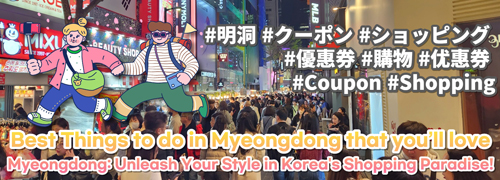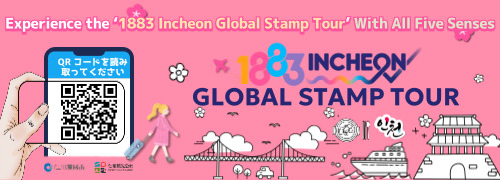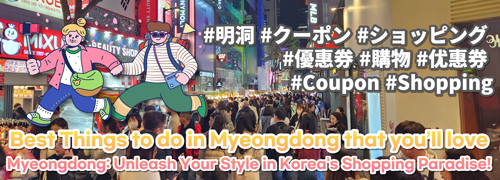Daegu Weather Forecast (3 hour unit)
Today
12/09
2.1oC
clear sky
3.09m/s 60% 0%
12/09 21
2.8oC
clear sky
60%
0%
12/10 00
2oC
clear sky
63%
0%
12/10 03
1.8oC
few clouds
67%
23%
12/10 06
1.4oC
overcast clouds
71%
100%
12/10 09
3.6oC
overcast clouds
62%
94%
12/10 12
8.3oC
broken clouds
44%
70%
12/10 15
9.8oC
overcast clouds
39% 85%
12/10 18
7oC
overcast clouds
48% 100%
12/10 21
6.6oC
overcast clouds
50% 100%
12/11 00
6.2oC
overcast clouds
51% 100%
12/11 03
5.8oC
overcast clouds
54% 100%
12/11 06
4.7oC
overcast clouds
59% 97%
12/11 09
6.9oC
overcast clouds
56% 85%
12/11 12
7.6oC
light rain
73% 98%
popular in Daegu
informations on traveling
139Articles
Review
10,389Reviews
Famous spot for Daegu
Daegu(Dong-gu)
,
Donghwasa Temple (동화사) is located on the south side of Palgongsan Mountain, about 22km northeast of Daegu. It was built by Monk Geukdal in the 15th year of King Soji’s reign (reign 493, 21st king during the Silla period). The original name of the temple was Yugasa, but Simjiwangsa rebuilt the temple under King Heungdeok (reign 826~836) and named it Donghwasa, which means even during the winter season, the paulownia tree still blooms. The present temple was last rebuilt in 1732.When you turn the corner, the first thing that catches your eye is the Seolbeopjeon Building. To the left of Seolbeopjeon is Daeungjeon, the main temple, and to the right of the building leads to the Geumgang Stairs. If you turn left in the direction of Daeungjeon you will see Bongseoru, aptly named to signify a Bonghwang (phoenix) with its tail pointed downward. Past Bongseoru are stairs that are typical of the ones leading into Daeungjeon, called "Nugak Stairs". On either side of the stairs are railings in the shape of a dragon, and in the middle of the stairs, there is a round stone marble that resembles a Yeouiju (or a dragon orb), a ball often associated with dragons.Donghwasa’s Daeungjeon is segmented into 3 sections at the front and side, and its natural looking pillars are one of its main attractions. It includes the statues of Seokgamonibul, Amitabul, and Yaksayeoraebul inside. If you walk down the stone stairs beside Bongseoru and walk along the cement road for a while, you will find the huge Seokjoyaksa Yeoraebul. Created as a prayer for reunification, this large Buddha statue is 17m high. The stone tower, stone light, lion statue, and the lotus flower that decorate the Buddha statue are all very large in size. Behind the statue are also stones arranged in a circular form, resembling a beautiful scroll painting. These are world-class size stone artifacts.
Daegu(Jung-gu)
,
Seomun Market (formerly known as ‘Daegu-Keun Market’) of Daegu is steeped in history. Along with Pyeongyang Market and Ganggyeong Market, Seomun Market was one of the three main markets during the Joseon Dynasty. It is situated only 300m from the West Gate of the city, and is befittingly named ‘Seomunsijang’ or ‘West Gate Market.’ Though the market has grown from its small size, the historic names of the alleyways such as Hongdukkaejeon and Daekjeon have remained unchanged.The specialties of the current Seomun Market include fabric-related items like silk, satin, linen, cotton, knitted goods, and men's and women's wear. However, visitors to the market will also find a decent selection of crafts, silver products and dried seafood. While still traditional in many respects, Seomun Market offers modern conveniences including a heating and cooling system and a large parking lot.
Daegu(Jung-gu)
,
Yangnyeongsi Oriental Medicine Cultural Center was established in 1993. On the first floor is the herbal medicine market, which opens every five days and sells different types of herbal medicine from across the country. The second floor, divided into six zones, houses various experience station, a souvenir shop and an outdoor garden. The third floor, divided into four zones, displays the general and historical facts about Oriental medicine development in the city of Yangnyeong. Through multiple exhibitions and various hands-on experience programs, the Cultural Center continues to provide an opportunity to experience the 350-year-old traditions in the history of Yangnyeong-si and Yakjeon Medicine Alley.
Daegu(Suseong-gu)
,
Daegu National Museum was built to preserve and exhibit the unique cultural heritage of Daegu and Gyeongsangbuk-do province. It is a neat brick building with two basement floors. There are three exhibit halls, a special exhibit hall, experiment study room, audiovisual studio and library. At the Archeology Gallery you can see relics ranging from the Neolithic Era to the Three Kingdoms Period chronologically. At the Art History Gallery you can see and learn about the Buddhist culture of Gyeongsangbuk-do province. Here you can see Buddhist sculptures, Buddha statues and Buddhist crafts. The Goryeo celadon and Buncheong ware are also displayed here. At the Traditional Folk Life Gallery you can learn about the Seonbi culture and the beliefs and rituals of the Yeongnam area, and see traditional Korean houses. You can also enjoy the Outdoor Gallery where a five-storied stone pagoda stands. There are other facilities where visitors can participate in museum activities. You can try traditional dyeing, explore the traditional herbs and learn about agricultural plants. Do not miss going here because this is where you can learn about traditional herbs used for medicine, plants and grains. Resting in the natural surroundings at the wildflower and plant walkway or the Ecology Valley can be very relaxing.
Daegu(Dalseong-gun)
,
Dongdo Confucian Academy is located in Dongdo-ri, Guji-myeon, Dalseong-gun and is one of the five major Confucian schools in Korea along with Byeongsanseowon, Oksanseowon, Sosuseowon and Dosanseowon Confucian Academies.The school was first established by Confucian scholars in 1568 at the eastern base of Biseulsan Mt., but was burnt down during the Japanese Invasion in 1592. In 1605, the school was reconstructed on its current site and was re-named ‘Borodong.’ In 1607, the name was changed to ‘Dongdo.’ ‘Dongdo’ means that the teachings (Do) of Sung Confucianism come from the East (Dong).Dongdoseowongandangsadangbujangwon, National Treasure No. 350, is part of the school and was designated Cultural Site No. 488 on Oct. 10th 2007. This unusually long name refers to the classroom, shrine, and walls of the Confuncian Academy in Dongdo.Must-see features of the school are the earthen wall, a hall named ‘Jungjeongdang,’ the Suwollu Pavilion and the 400-year-old ginkgo trees. The earthen wall has beautiful patterns in the shape of birds engraved in it and is the only earthen wall in the nation to be designated a national treasure.If you continue past the ginkgo trees outside you’ll see the Suwollu Pavilion. The picturesque view from the pavilion is breath-taking.At Jungjeongdang, there is a sculpture with four dragon heads, each holding either cintamani (a bead) or a fish in its mouth. This sculpture, which is called 'Samuljam,' symbolizes the teaching of Confucius telling us not to speak, act, or even listen if it’s not done in the right way.Dongdoseowon Confucian Academy contains the ancestral tablets of Kim Geong-pil and Hangang Jeong Gu. The school holds ancestral ceremonies on the day of Jungjeong every February and August.
Daegu(Dong-gu)
,
Bangjja Brassware Museum is the first original museum of its kind in Korea. Unknown to many, Bangjja Brassware possesses a host of beneficial attributes and is used both for storing food and for growing plants. One of its primary functions is that of cultivating nutritive elements.The Bangjja Brassware Museum in Daegu has numerous brassware products on hand that were generously donated by Lee Bong-Ju. His collection was subsequently appointed intangible cultural asset number seventy-seven by the Korean government.The museum’s layout is rather intricate. Both the basement floor and second ground floor consist of three exhibit halls, a data research hall, a cultural experience hall, a video education hall, an outdoor stage, and several planning exhibit halls. In the Brassware Cultural Hall, a display boasting Korea’s history regarding various kinds of brassware, together with other relevant information is on hand for visitors. In the nearby Donation Hall, an important intangible cultural asset, Lee Bong Ju’s luxury brassware collection, is on display. In the Reappearance Hall there are makeshift displays illustrating where brassware was first produced and where it was traded.
Daegu(Jung-gu)
,
Located in Pojeong-dong, Jung-gu, Daegu, the Daegu Modern History Museum was officially opened on January 24, 2011. The museum is housed in a building that is rich in history. First built by Japan in 1932 as a bank, the building was once a symbol of repression and exploitation during the Japanese colonial rule. Today, the building stands proudly as an educational site and bears the title of ‘Cultural Property No. 49’ in recognition of its historical and cultural significance.The two-story museum (1,971 square meters) houses a permanent exhibition (1F), featured exhibition (2F), and a hands-on exhibition room and classroom for diverse cultural activities and lectures. The history exhibition features the lifestyle of Daegu citizens, local customs, and education of the late 19th century and the early 20th century.Opening hours are between 9:00am and 7:00pm; the museum is closed on Mondays.
Daegu(Nam-gu)
,
Anjirang Market is located halfway between Anjirang five-way intersection and Anjiranggol-ro Street. Starting with Chungbuksikdang Restaurant (founded in 1979), livelihood-motivated restaurants and eateries began opening up here since the end of the IMF crisis in 1998 until it reached its current size today.Locals enjoy coming to the area because of the affordable prices. Recently, the area is also trying to draw in a younger demographic by targeting the younger population.In order to give life to the district, signage repairs and modification, additional installation of hygiene facilities and other improvements were made in 2007.
Daegu(Buk-gu)
,
EXCO is a leading exhibition and convention center in Daegu Metropolitan City. Since opening in April 2001, the EXCO has been successfully hosting international events. Major facilities include exhibition halls, conference rooms, and meeting rooms, while subsidiary facilities include restaurants, cafes, bank, post office, travel agency, medical clinic, business support centers, and convenience store.
Daegu(Dong-gu)
,
The Dakddongjip Town in Pyeonghwa Market was established in 1972, and is a street specializing in chicken gizzard dishes. It is said that the dish was first offered as an affordable dish to accompany drinks, favored by blue-collar laborers who gathered at the early labor market in front of Pyeonghwa Market in the 1970s. Rather than being pan-fried, chicken gizzard is deep-fried like chicken meat. Inexpensive and delicious, the dish has remained popular. Dakddongjip Town was designated the third "Good Street” by the Community Chest of Korea, a network of governing bodies that run a philanthropic organization. The Good Street designation is given to the streets where storekeepers subscribe to the Community Chest of Korea’s Good Street campaign to share good deeds.











